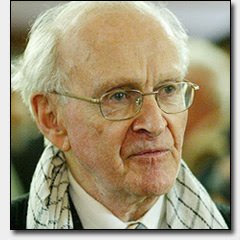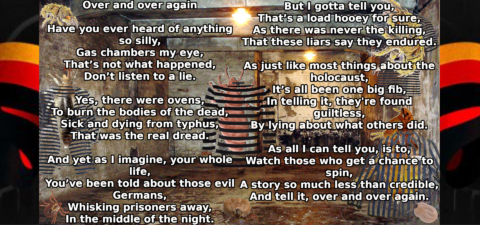Paul Rassinier was a man with an uncommon quality, honesty. Rassinier had been active in the French resistance during World War II. He was arrested and served time in two different German concentration camps. Rassinier had the integrity and courage to denounce the rumors and fabrications reported after the war about life within the camps and in particular those in which he had been held as a prisoner.
These inquiries appear to be the first published in print; therefore. French-born Paul Rassinier could be called the Father of Holocaust Revisionism. His book entitled “Debunking the Genocide Myth” is a compilation of much of his research into the tall tales published after the war about the assorted extermination methods, the brutality of the S.S. officers and the exceedingly large number of Jewish victims.
Paul Rassinier was born at Beaumont, France, on March 18, 1906 and died near Paris on July 29, 1967. Rassinier was a geography teacher and a member of his local Socialist Party. With the invasion of France, he was associated with a pacifist, non-Communist underground organization which aided Jews to cross the Swiss border. (His charitable service to the Jews meant little to them after his investigations.)
The first part of this book describes his wretched time at the Buchenwald and Dora concentration camps. He had been arrested in October, 1943, and was released from Dora in 1945, in a debilitated physical state. His health remained fragile.
Apparently Rassinier understood German and was able to define the responsibilities of each prison official within the prison hierarchy based upon his own experiences. Most of the brutal treatment came from the trustees or Kapos who were selected by the S.S. from among the imprisoned actual criminals or Communists. The Kapos who controlled the prison population were Russians, Czechs, Poles, and Germans.
From Page 53: “One would think that this arrangement was used out of sadism, and, after the war was over, that is what was said. But, it was really out of the necessity to economize personnel that the system was used, and for that reason, in all prisons in all countries, the same situation holds. The S.S. itself only administrated the camp when it was impossible for them to do otherwise.”
Rassinier questions how much the French actually know about the activities inside of their own penal institutions in order to explain why the German population had good reason to lack understanding about the concentration camps. How much do Americans know about the abuses which occur in prisons in our own back yards?
From Page 425: “…the idea that the crematory ovens were designed as instruments of genocide for the specific use in the concentration camps; such a conclusion is unwarranted since cremation is a common practice – just as common as burial – all over Germany.”
By the author on Page x: “It will be enough then for me to tell you that the concentration camps were a world of horrors. And if anything ought to be added, it would be this: in spite of this, just about all those who have spoken of them have overdone it and particularly their explanations have little in common with the truth…Concerning figures, the ‘witnesses’ have said and written the most improbable things. Concerning the implementation of the means of killing, also. Concentration camp literature on the whole has the appearance of a collection of contradictory pieces of ill-natured gossip.”
From Page 109: “Then one day I realized that a false picture of the German camps had been created and that the problem of the concentration camps was a universal one, not just one that could be disposed of by placing it on the doorstep of the National Socialists. The deportees—many of whom were Communists—had been largely responsible for leading international political thinking to such an erroneous conclusion. I suddenly felt that by remaining silent I was an accomplice to a dangerous influence. And, at one sitting, without paying attention to literary style and in as simple as possible a form, I wrote my Le Passage de la ligne in an attempt to put things into proper perspective and in an attempt to bring people back to a sense of objectivity and, at the same time, to a better conception of intellectual honesty.”
Following the Introduction, “Debunking the Genocide Myth” is divided into three parts. Part I is the author’s experience in the camps. Part II is the experience of others and Rassinier’s research into their claims. Part III is the drama of the European Jews in which the author does statistical comparisons based upon the conflicting accounts of Jewish deaths, census records and emigration estimates.
“Debunking the Genocide Myth” contains 441 pages in soft cover form. There is a photograph of the author on the back cover. My copy was published in 1978 by the Institute for Historical Review, P.O. Box 1306, Torrance, California 90505. This book is a collection of Paul Rassinier’s works written about 1962. I found several of his books in French and English for sale on the website of www.abebooks.com.
As Rassinier documents, much of these false claims and lies about cadaver numbers which have been committed to print by the Holocaust clan, has been done in order to gain additional reparations from Germany. He does not believe that financial payments should have been required by the country of Israel which did not exist until 1948. Paul Rassinier was a witness to the illnesses and deaths of camp prisoners; therefore, he never denies that many individuals died in the work camps.
Rassinier stands out in history not only as the Father of Holocaust Revisionism, but as the man who would satisfy the search of Diogenes for one honest man.
Nancy Hitt – 2012
hunleyhitt@earthlink.net




